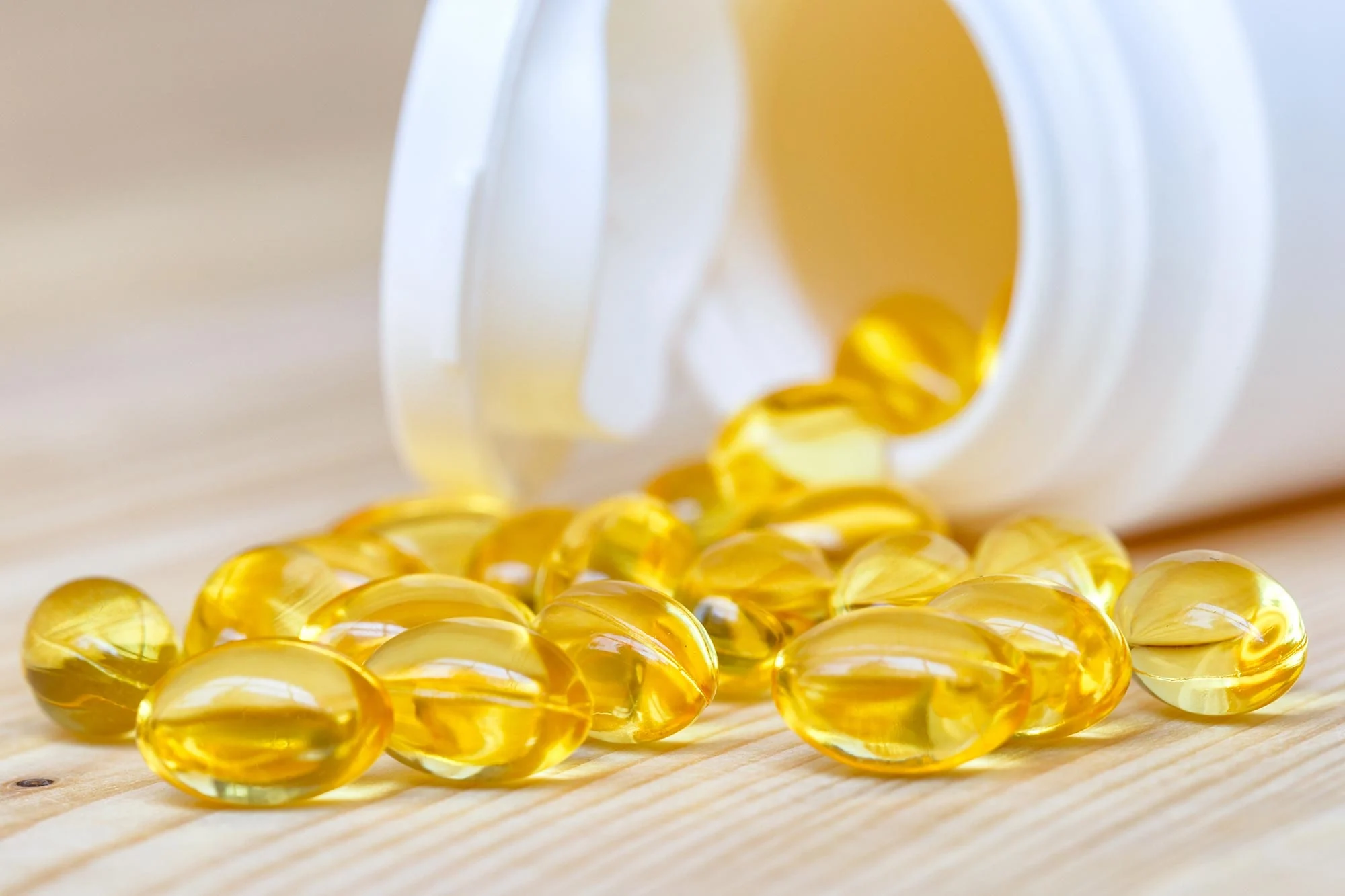
Fish High In Omega 3: 10 Fish To Eat More Regularly
Lipids or fats are an essential part of a healthy diet and foods high in omega 3 fatty acids, such as fish, can support a healthy dietary intake of fat. Most people overlook dietary fats when it comes to their nutrition. Fatty acids form a key part of your cells and body. They are needed for the structural integrity of your cell membranes and are also important in the brain. The nutritional importance of eating healthy fatty acids is very understated.
Omega 3 Fatty Acids
Omega 3 is an example of a healthy fatty acid, it is abundant in fish and olive oils. This is why many people eat fish regularly, either by nutritionist advice, or through the knowledge that healthy fats can support their overall nutritional status.
An important thing to note with consuming fish is that polyunsaturated fatty acids can go rancid quickly. This means that you need to consume them. Oils like omega 3 go rancid when high energy free radicals breakdown bonds in fats. This is called autoxidation. This can detract from the potential health benefits of consuming healthy fats like omega 3. This means that to get the most out of your fish omega 3 oils, you should consume fish when fresh.
Fish are generally considered to be the best sources of omega 3 fatty acids such as EPA and DHA. EPA and DHA are just two forms of omega 3 polyunsaturated acids. Omega 3 is also available from plant sources, such as flax seeds, in the form of ALA omega 3. Humans are unable to make these omega 3 fatty acids. For these reasons they need to be consumed through your diet.

Omega 3
Fatty acids are an important component of cell membranes and brain tissue
Omega 3 fatty acids may have an anticarcinogenic effect in the body
100mg of DHA each day improved cognitive functioning in elderly patients
Supplementation with 1.2g of DHA omega 3 each day improved HDL levels

Health Benefits of Eating Fish High In Omega 3
Fatty acids are found throughout the body and have various roles in cells. This is why there are quite well-established potential health benefits through consuming high amounts of omega 3. The potential health benefits of eating diets rich in omega 3 include a reduction in the risk of heart disease, cancer and neurodegenerative diseases.
Omega 3 And Heart Disease
Because of their roles in a maintaining healthy blood lipid profiles and cell to cell communication, omega 3 fatty acids are thought to have a profound potential to improve cardiovascular disease risk and outcomes. Cardiovascular disease rates are extremely high in the west. Research suggests that may be because of the poor nutritional composition of western diets. This is all the more reason to consider improving the amount of fish high or rich in omega 3 in your diet.
The American Heart Association recommends 1 gram of omega 3 fatty acids a day for cardiovascular disease sufferers. Research showed that supplementation with about 1.2 grams of DHA for 6 weeks improved HDL levels in the blood. This is a big risk factor for heart diseases. While a combined intake of EPA and DHA, equivalent to 650mg and 450mg respectively, reduced the risk of cardiovascular disease significantly.
Brain Health And Omega 3
Omega 3 might also be able to support brain health. Fatty acids support the production of nerve cell myelin layers. Without proper myelin key brain abilities, such as speed of thought, are greatly reduced. Omega 3 consumption may contribute to the prevention of neurodegenerative diseases such as Alzheimer’s disease. Conversely, cognitive decline is associated with lower intake of omega 3 fatty acids. Just 100mg of DHA omega 3 a day, improved cognitive functioning in elderly patients with memory loss.
Omega 3 fatty acids may also influence depression through optimising brain receptor, brain stability and neurotransmitter production. Consuming 1.9 grams of omega 3 per day, for 12 weeks, improved symptoms of depression.
The health benefits to lowering the risk of cognitive declines throughregularly consuming omega 3 are really apparent when comparing dementia and motor-cognitive risk syndrome prevalence with fish consuming nations. Both the United States and Europe have higher prevalence of these neuronal issues than nations eating more fish on average, such as Japan. Lowered DHA levels in unborn babies also increases the risk of neurological conditions.
Omega 3 Fatty Acids And Cancer
Anticarcinogenic effects have been observed in clinical studies with omega 3 fatty acid consumption. Omega 3 might supress the development of skin, colon and lung cancers in the body. This may be because of improved cell antioxidant status and effects on cell signalling pathways.
Now we’ve established some of the important potential health benefits of consuming foods rich in omega 3 fatty acids, lets consider some top fish sources of omega 3.
10 Fish Food Sources High In Omega 3
As mentioned, of all the food sources available fish are generally considered to be the best sources of omega 3 fatty acids. Some fish are easier to find than others, so we have offered variety here in more easily obtainable fish food sources of omega 3 fatty acids. You should also be able to integrate these fish quite easily into your diet.
Salmon
In farmed and cooked Atlantic salmon, there is 2.51grams of EPA, DPA and DHA omega 3 fatty acids per 100 grams of salmon. This is the one of the highest omega 3 levels per 100 grams of all the readily available fish foods. Salmon is a really easy food to prepare and cook, combining well with various seasoning or sauces.

Anchovy
100 grams of canned European anchovy contains 2.10 gramsof EPA, DPA and DHA omega 3 fatty acids. This is a popular topping on pizza and is a tasty inclusion in tomato pasta-based dishes too. Anchovy has a natural salt content that adds some extra flavour to these foods. If you look in the right places this fish is really easy to find.
Herring
100 grams of broiled herring contains about 2.09 grams of EPA, DPA and DHA omega 3 fatty acids. Herring is not as easy to buy as salmon but is an easy food to cook and provides a similar amount of omega 3.
Mackerel
Mackerel is a very popular oily fish that is really easy to prepare. It is best lightly fried in a pan, while fresh mackerel can also be easily cooked on the BBQ. In 100 grams of Pacific and jack mixed species of mackerel there is 2.01 grams of EPA, DPA and DHA omega 3.
Tuna
Freshly baked or broiled bluefin tuna contains 1.65 grams of EPA, DHA and DPA omega 3 per 100 grams. Tuna is a really popular dish for many globally and is so easy to buy too. Tuna is great in a salad or as part of a pasta.

Rainbow Trout
Rainbow trout is not as easy to find as some of the other fish, but it does provide a range of nutrients in addition to omega 3. Adding harder to find food like this into your diet every so often can ensure you that are balancing your micronutrient status. Wild baked rainbow trout contains 1.16 grams of DHA, EPA and DPA omega 3, while also containing 0.19 grams of ALA omega 3 per 100 grams.
Sardines
Atlantic sardines with bones contain 0.98 grams of DHA, EPA and DPA omega 3 fatty acids, while also containing 0.50 grams of ALA omega 3 per 100 grams. Sardines are a very tasty food when lightly pan fried or cooked gently on the BBQ. They offer a range of other nutrients too and can also easily be eaten with pasta.
Carp
Carp is a popular fish with fishers and contains an average amount of omega 3 compared to other fish. Broiled or baked carp contains 0.56 grams of EPA, DPA and DHA omega 3, while also containing 0.35 grams of ALA per 100 grams of carp. This makes our list here. While not being the richest in omega 3, carp still provides a good serving of omega 3.
Pollock
Pollock contains 0.57 grams of EPA, DPA and DHA omega 3 fatty acids per 100 grams of pollock. This is a popular cod alternative and can also be used in many different recipes. We find that it is best grilled plain or pan fried.

Halibut
In 100 grams of halibut there is 0.26 grams of EPA, DPA and DHA omega 3 fatty acids. This fish is very popularly baked or pan seared and eaten with a simple sauce.

Summary
The regular consumption of fatty acids, like omega 3, is essential to maintaining a healthy diet. Fresh fish, rich in omega 3 oils, can help to support a high intake of healthy fats and fatty acids. This often-overlooked nutrient is essential for optimal overall wellbeing, considering how essential fatty acids are to normal cellular structure and function.
Omega-3 is a polyunsaturated fatty acid and fish are generally considered to be the best food sources of omega 3 fatty acids. The omega 3 fatty acids in fish and fish oils are mainly EPA and DHA. Humans can make these, so they need to be consumed through your diet.
Some potential health benefits of improving your omega 3 fatty acid intake include improved heart health, lowered cancer risk and the prevention of neurodegenerative diseases.
Here we have covered 10 fish that are high in omega 3 fatty acids to include in your diet. Of these the fish the are the richest in omega 3 fatty acids are salmon, anchovy, herring and mackerel. These fish are all really easy to find and cook. If you are looking to improve the omega 3 intake in your diet, you should look to incorporate these foods more often into your diet.
For more interesting articles, navigate to the main articles page below.




